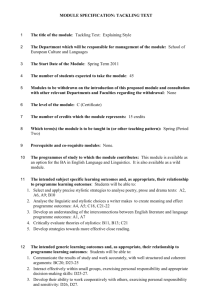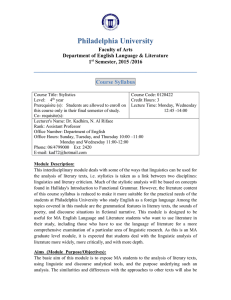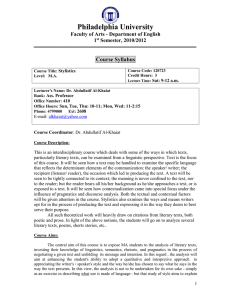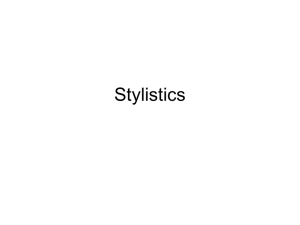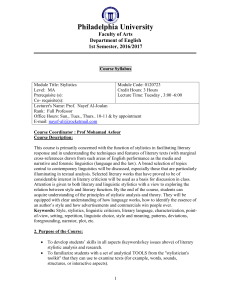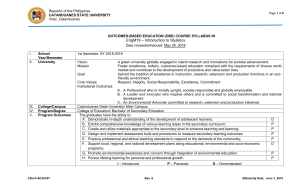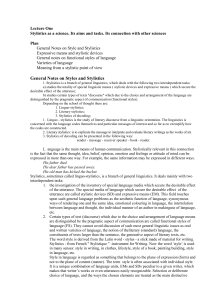Approaches to using literature (PPP)
advertisement
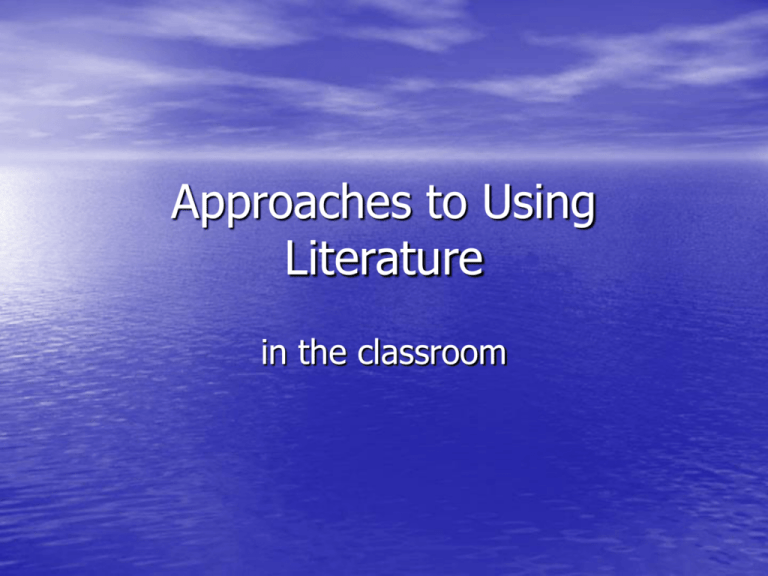
Approaches to Using Literature in the classroom Definition Literature means those novels, short stories, plays and poems which convey their message by paying considerable attention to language which is rich and multilayered. 3 basic approaches 1. a language-based approach 2. a content-based approach 3. literature for personal enrichment 1. A language-based approach • material is chosen for the way it illustrates certain stylistic features of the language but also for its literary merit integration of language and literature syllabuses detailed analysis of the language helps students to make meaningful interpretations or informed evaluations of it increase of general awareness and understanding of English encouragement to draw on existing knowledge of grammatical, lexical or discoursal categories to make aesthetic judgements of the text 2. A content-based approach • texts are selected for their importance as part of a literary canon or tradition concentration on history, the characteristics of literary movements, the social, political, historical background, literary genres and rhetorical devices 3. Literature for personal enrichment • material is chosen on the basis of whether it is appropriate to students’ interests and will stimulate a high level of personal involvement • material is often organised thematically (German: Unterrichtsreihe), and may be placed alongside non-literary materials which deal with a similar theme literature as a tool for encouraging students to draw on their own personal experiences, feelings, and opinions it helps students to become more actively involved both intellectually and emotionally and hence aids acquisition excellent stimulus for groupwork Task The NRW curriculum Englisch Sekundarstufe II : Gymnasium/Gesamtschule (p. 30) says the following about dealing with literary texts: By dealing with exclusively authentic and thematically as well as structurally complex literary texts, the students deal with demanding topics, get to know different structural patterns, analyse examples of differentiated uses of language, elaborate aesthetic effects and intentions while at the same time taking into account factors that are external to the text, and are asked to re-cast texts and create their own ones. a) b) Which of the above-mentioned approach(es) can you find here? What does that mean for your own (future) teaching? A language-based approach to using literature Handout 1: Activities Stylistics in the classroom • • Stylistics is part of a language-based approach to using literature. Stylistics, which involves a close study of the literary text itself, has two main objectives: (1) to enable students to make meaningful interpretations of the text itself; (2) to expand students’ knowledge and awareness of the language in general. Background • Traditional practical criticism: students are presented with a text and expected to arrive spontaneously at an appreciation of its literary qualities no explicit guidance as to how this is to be done differences in the linguistic, cultural and literary backgrounds between a native speaker and a language learner → intuitions about the language may differ considerably being expected to appreciate a text without being given a clear strategy for doing so → boredom, mystification, demotivation Instead: Enable students to reach an aesthetic appreciation of a text which connects its specific linguistic features with intuitions about its meanings. Stylistics is such a way, as it uses linguistic analysis to understand how messages are conveyed. Analysing a text for classroom use • objective: to design activities for our students which use stylistic analysis; • we ourselves need a procedure or strategy for analysing the text; • one possible procedure which involves two main steps: Step 1 While looking at a particular text, note down any linguistic features which are particularly noticeable. These features may be noticeable because they recur with unexpected frequency in the text; they deviate slightly from what might be considered grammatically or lexically usual; if these features were paraphrased or rewritten in a slightly different way, a very different effect would be created. Step 2 Develop a series of questions which alert students to these features, and encourage them to reach an interpretation or appreciation of the text bearing these features in mind. A two-step procedure for stylistic analysis Handout 2: Example & Task Preparation for next week Please read pp. 35-38 and pp. 41-43 in: Gillian Lazar (1993), Literature and Language Teaching. (reserved reading shelf).



